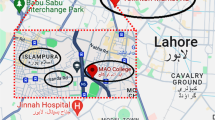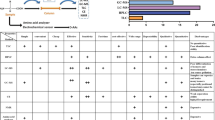Abstract
This study presents hematological and biochemical reference intervals (RIs) for two species of viper snakes (Bothrops asper and Crotalus simus), which are the first of their type particularly for these two species maintained in captivity and for extraction of venom purposes. A total of 77 snakes were used in developing the study; specifically 39 B. asper and 38 C. simus snakes. Blood samples were obtained by puncturing the caudal vein, and hematological tests were performed manually by two independent technicians. Plasma biochemistry parameters were determined by an automatized analyzer. There are hematological differences between wild-caught and captive B. asper in the percentage of heterophils (P < 0.001), while in captive and wild-caught C. simus, the differences are found in the percentage of eosinophils, lymphocytes, and monocytes (P < 0.001). Differences in glucose (P = 0.012), uric acid (P < 0.001), and cholinesterase (P = 0.004) are found in captive and wild-caught B. asper. Differences in albumin (P = 0.002), calcium (P < 0.001), CK (P = 0.04), and LDH (P = 0.037) are found between captive and wild-caught C. simus. This study constitutes the first set of hematological and biochemical RIs for B. asper and C. simus maintained in captivity with the purpose of producing antivenom in Costa Rica. The establishment of comprehensive RIs for hematology and plasma biochemistry for these two species of snakes is useful for interpretation of blood test results, moreover, to serving as a reference for viper snakes used for research purposes.
Similar content being viewed by others
References
Alape-Girón A, Sanz L, Escolano J et al (2008) Snake venomics of the lancehead pitviper Bothrops asper: geographic, individual, and ontogenetic variations. J Proteome Res 7:3556–3571
Alleman AR, Jacobson ER, Raskin RE (1999) Morphological, cytochemical staining and ultrastructural characteristics of blood cells from eastern diamondback rattlesnakes (Crotalus adamanteus). Am J Vet Res 60(4):507–514
Allender MC, Mitchell MA, Phillips CA, Gruszynski K, Beasly VR (2006) Hematology, plasma biochemistry, and antibodies to select viruses in wild-caught eastern massasauga rattlesnakes (Sistrurus catenatus catenatus) from Illinois. J Wildl Dis 42(1):107–114
Ashley BD, Burchfield PM (1968) Maintenance of a snake colony for the purpose of venom extraction. Toxicon 5:267–275
Bolaños F, Savage JM (2009) A checklist of the amphibian and reptiles of Costa Rica: additions and nomenclature revisions. Zootaxa 2005:1–23
Braun JP, Concordet D, Geffré A, Abella NB, Trumel C (2013) Confidence intervals of reference limits in small reference sample groups. Vet Clin Pathol 42(3):395–398
Brown GP, Shilton CM, Shine R (2006) Do parasites matter? Assessing the fitness consequences of haemogregarine infection in snakes. Can J Zool 84:668–676
Bryant GL, Fleming PA, Twomey L, Warren KA (2012) Factors affecting hematology and plasma biochemistry in the southwest carpet python (Morelia spilota imbricata). J Wildl Dis 48(2):282–294
Burtis CA, Ashwood ER, Bruns DE (2008) Tietz fundamentals of clinical chemistry, 5th edn. Saunders, USA
Campbell TW (2015) Exotic animal hematology and cytology. 4th ed. John Wiley & Sons, Inc. Wiley Blackwell, pp 67–83
Clark NB (1966) Influence of estrogens upon serum calcium, phosphate and protein concentration of fresh-water turtles. Comp Biochem Physiol 20:823–834
Dessauer HC (1970) Blood chemistry of reptiles: physiological and evolutionary aspects. Academic Press Inc, London
Fernández P, Gutiérrez JM (2008) Mortality due to snakebite envenomation in Costa Rica (1993–2006). Toxicon 52:530–533
Flint M, Morton JM, Limpus CJ, Patterson-Kane JC, Murray PJ, Mills PC (2010) Development and application of biochemical and haematological reference intervals to identify unhealthy green sea turtles (Chelonia mydas). Vet J 185:299–304
Friedrichs KR, Harr KE, Freeman KP et al (2012) ASVCP reference interval guidelines: determination of de novo reference intervals in veterinary species and other related topics. Vet Clin Pathol 41(4):441–453, ISSN 0275–6382
Geffré A, Friedrichs K, Harr K, Concordet D, Trumel C, Braun JP (2009) Reference values: a review. Vet Clin Pathol 38(3):288–298
Gillet AK, Flint M, Hulse L, Hanger J, Mills PC (2015) Haematological and biochemical reference intervals for three species of hydrophiine sea snakes (Hydrophis curtus, H. elegans and H. peronii) in Australia. Vet J 204:275–281
Gutiérrez JM (2009) Snakebite envenomation in Central America. In: Mackessy SP (ed) Handbook of venom and toxins of reptiles. CRC Press, Boca Raton, pp 491–507
Gutiérrez JM, León G, Burnouf T (2011) Antivenoms for the treatment of snakebite envenomings: the road ahead. Biologicals. doi:10.1016/j.biologicals.2011.02.005
Hattingh J, Willemse GT (1967) Hematological observations on the puff adder, Bitis arietans (Ophidia: Viperidae). Herpetologica 32(3):245–247
Kasturiratne A, Wickremasinghe AR, de Silva N et al (2008) The global burden of snakebite: a literature analysis and modeling based on regional estimates of envenoming and deaths. PLoS Med 5:e218
Labocha MK, Schutz H, Hayes JP (2014) Which body condition is the best? Oikos 123:111–119
MacMahon JA, Hamer AH (1975) Hematology of the sidewinder (Crotalus cerastes). Comp Biochem Phys A 51A:53–58
Mader DR, Horvath CC, Paul-Murphy J (1985) The hematocrit and serum profile of the gopher snake (Pituophis melanoleucus catenifer). J Zool Anim Med 16(4):139–140
Madsen T, Ujvari B, Olsson M (2005) Old pythons stay fit: effects of haematozoan infections on life history traits of a large tropical predator. Oecologia 142:407–412
McDaniel RC, Grunow WA, Daly JJ, Plummer MV (1984) Serum chemistry of the diamond-backed water snake (Nerodia rhombifera rhombifera) in Arkansas. J Wildl Dis 20(1):44–46
Murphy JB, Armstrong BL (1978) Maintenance of rattlesnake in captivity. University of Kansas, Lawrence
Parida SP, Dutta SK, Pal A (2014) Hematology and plasma biochemistry of wild-caught Indian cobra Naja (Linnaeus, 1758). J Venomous Anim Toxins Incl Trop Dis 20:14
Peig J, Green AJ (2009) New perspective for estimating body condition from mass/length data: the scaled mass index as an alternative method. Oikos 118:1883–1891
Salakij C, Salakij J, Apibal S, Narkkong NA, Chanhome L, Rochanapat N (2002) Hematology, morphology, cytochemical staining, and ultrastructural characteristics of blood cells in king cobras (Ophiophagus hannah). Vet Clin Pathol 31(3):116–126
Sanchez-Hernandez JC (2003) Evaluating reptile exposure to cholinesterase-inhibiting agrochemicals by serum butyrylcholinesterase activity. Environ Toxicol Chem 22(2):296–301
Savage JM (2002) The amphibians and reptiles of Costa Rica: a Herpetofauna between two continents, and two seas. The University of Chicago Press, Chicago
Strum KM, Alfaro M, Haase B et al (2008) Plasma cholinesterases for monitoring pesticide exposure in nearctic-neotropical migratory shorebirds. Ornitologia Neotropical 19:1–11
Thrall MA, Baker DC, Campbell TW et al (2006) Veterinary hematology and chemical chemistry. Blackwell Publishing, pp 259–276; 493–498
Troiano JC, Vidal JC, Gould J, Gould E (1997) Haematological reference intervals of the South American rattlesnake (Crotalus durissus terrificus, Laurenti, 1768) in captivity. Comp Haematol Int 1:109–112
Troiano JC, Vidal JC, Gould EF et al (1999) Haematology and blood chemical values from Bothrops ammodytoides (Ophidia-Crotalidae) in captivity. Comp Haematol Int 9:31–35
Troiano JC, Gould EG, Althaus R et al (2001) Blood chemical profile of the South American rattlesnake (Crotalus durissus terrificus) in captivity. J Venomous Anim Toxins 7(2):183–189
Vasaruchapong T, Disarapong P, Chulasugandha P et al (2013) Comparative studies on hematological and plasma biochemical parameters in different types of venomous snakes in Thailand. Comp Clin Pathol. doi:10.1007/s00580-013-1721-9
Wack RF, Hansen E, Small M, Poppenga R, Bunn D, Johnson CK (2012) Hematology and plasma biochemistry values for the giant garter snake (Thamnophis gigas) and valley garter snake (Thamnophis sirtalis fitchi) in the central valley of California. J Wildl Dis 48(2):307–313
WHO (2010) WHO guidelines for the production, control and regulation of snake antivenom immunoglobulins. World Health Organization, Geneva
Acknowledgments
The authors thank the continuous support of JM Gutiérrez, Y. Angulo, and G. León on the development of this work. This work was performed in partial fulfillment of the Master degree of A. Gomez at the University of Costa Rica.
Author information
Authors and Affiliations
Corresponding author
Ethics declarations
Funding
This work was financially supported by the Vicerrectoría de Investigación, University of Costa Rica, project 430-B3-702.
Conflict of interest
The authors declare that they have no conflict of interest.
Ethical approval
All applicable national and institutional guidelines for the care and use of animals were followed. This study was approved by the Institutional Committee for the Care and Use of Laboratory Animals (CICUA) of the University of Costa Rica (No. Resolution 124, session 28/06/2012).
Additional information
All the authors agree with the content of this manuscript and all have significantly contributed to the performance of the study and the preparation of the manuscript. All authors have approved the final version of this manuscript.
Rights and permissions
About this article
Cite this article
Gómez, A., Arroyo, C., Astorga, W. et al. Hematological and biochemical reference intervals for Bothrops asper and Crotalus simus (Serpentes: Viperidae), maintained in captivity for venom extraction. Comp Clin Pathol 25, 615–623 (2016). https://doi.org/10.1007/s00580-016-2240-2
Received:
Accepted:
Published:
Issue Date:
DOI: https://doi.org/10.1007/s00580-016-2240-2




